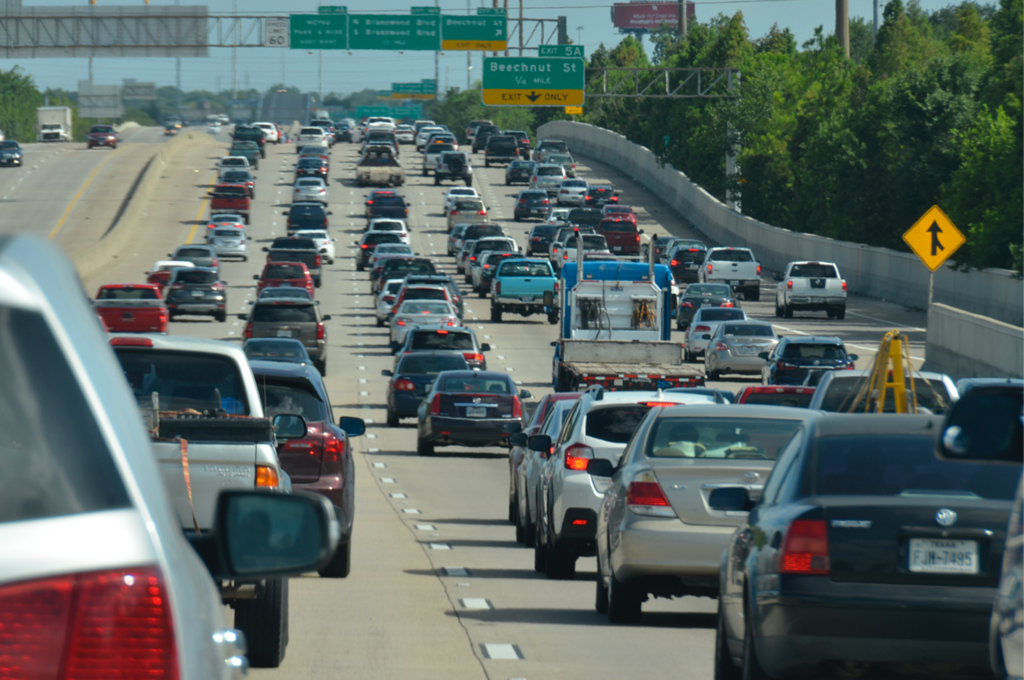Michigan Engineering student team wins round two of IBM Call for Code challenge with traffic management solution
A team of two Michigan Engineering undergraduate students, computer science major Chris Zhang and chemical engineering major Natalia Alejo Garza, have won first place in Round Two of the IBM Call for Code Global Challenge. Their winning proposal, Traffic AI, harnesses the power of machine learning to optimize road designs with the goal of reducing traffic congestion and associated carbon emissions.
“Cars have been around for a hundred years, and nothing has really changed in terms of how we go about planning roads and city layouts,” said Zhang. “Traffic AI explores the possibility of integrating technology and urban planning, and it crafts computer-tested solutions based on data rather than trial and error.”
The IBM Call for Code Global Challenge is an international competition that calls on thought leaders and problem solvers from around the world to craft solutions that enhance global sustainability. In its sixth year, Call for Code is the largest and most influential “tech-for-good” initiative in the world, bringing together innovators from universities, startups, corporations, and beyond to take on some of our most pressing humanitarian, social, and environmental challenges.
Traffic AI represents an innovative, data-driven solution to a seemingly intractable problem: traffic congestion. Whether caused by construction projects, poor road planning, overpopulation, or a combination of factors, traffic is a major problem across the world. In the U.S. specifically, traffic costs each American roughly 51 hours and $839 in lost time and fuel costs annually. Traffic congestion also increases the risk of crashes, as well as decreasing fuel efficiency and contributing to global carbon emissions.

“Traffic congestion is a significant and avoidable source of carbon emissions. These emissions contribute to climate change and low quality air,” said Alejo Garza. “Through Traffic AI, we strive to improve traffic flow by determining improvements to existing roads as well as optimized designs for new roads.”
Inspired by their own experiences (and frustrations) with traffic congestion, Zhang and Alejo Garza sought to design and apply a more data-focused approach to determine the best road layout to reduce traffic jams. This is an approach that has been sorely missing in urban planning, where construction plans and road designs are based on rough estimates rather than hard data.
“Currently, urban planners make these decisions based on various constraints, like stakeholder needs, time or money estimates, etc.” said Zhang. “They haven’t yet utilized the full potential of data and AI in this industry.”
Zhang and Alejo Garza’s proposed Traffic AI system uses unsupervised reinforcement learning to model traffic flows and optimize road layouts to reduce congestion as much as possible. Unsupervised reinforcement learning is a type of machine learning technique by which a computer essentially trains itself to perform a task using unlabeled data.
“You give the machine a task and a set of rules, and it iterates upon itself until it figures out the best possible way to accomplish that task to optimize the reward,” said Zhang.
The reward in Traffic AI’s case is as little congestion as possible. To get to this point, the system performs traffic simulations using an existing highway as a model, which takes into account various parameters such as vehicle flow, congestion patterns, and more. The program then restructures the road configuration and signage to optimize traffic flow, resulting in a more efficient design.

The goal of Traffic AI is to equip urban planners and local officials with data-driven tools to make more informed decisions when it comes to road design and traffic management.
“We don’t intend for Traffic AI to replace urban planners,” said Zhang. “Instead, Traffic AI provides a different perspective for urban planners to take into consideration the next time they are considering construction projects, building new roads, or expanding a city.”
The IBM Call for Code judges took note of the innovativeness of this approach, as well as its potential to address a problem of global concern, selecting Zhang and Alejo Garza as the top-performing university team in the challenge’s second round.
Notably, Zhang and Alejo Garza are not the first U-M team to see success in the IBM Call for Code challenge. Their peers in Michigan Engineering won the first round of the challenge earlier this year for their coral reef health monitoring system. According to Zhang, it’s no coincidence that two U-M teams have excelled in the competition.
“The connection between disciplines was a huge part of our success,” he said. “It was so important to have Natalia’s perspective as a chemical engineer and as a business minor to complement my computer science background.”
Alejo Garza echoed this sentiment. “Our distinct backgrounds allowed us to complement our skills and create a well-rounded solution that was both technically advanced and scalable in the real world,” she said.
In the future, Zhang and Alejo Garza hope to see their traffic management solution implemented in urban planning contexts and perhaps integrated into self-driving vehicle technology. For now, Traffic AI is an open-source platform, available for anyone to access and use, providing an excellent resource for reducing traffic flow and reducing transportation-related emissions.
 MENU
MENU 
